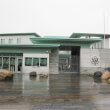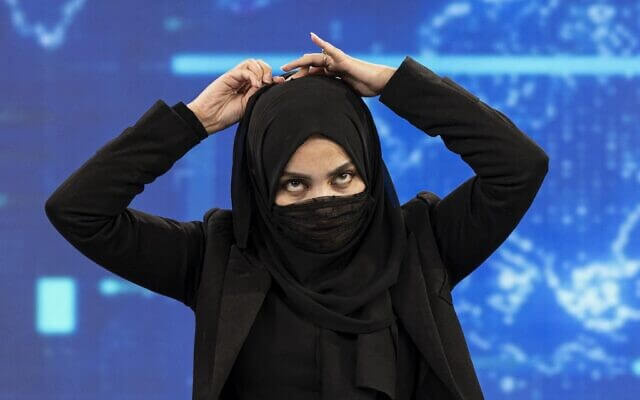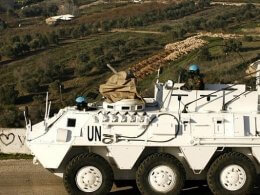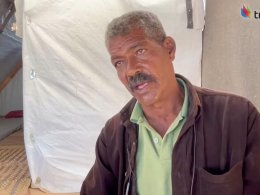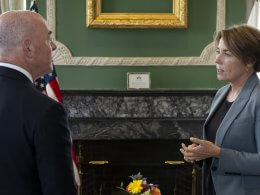Women television presenters on Afghanistan’s leading news channels on Sunday vowed to speak up for their rights after being forced by Taliban authorities to cover their faces on air.
Since seizing power last year, the Taliban have imposed a slew of restrictions on civil society, especially on women and girls to comply with the group’s austere brand of Islam.
This month Afghanistan’s supreme leader Hibatullah Akhundzada issued a diktat for women to cover up fully in public, including their faces, ideally with the traditional burqa.
The feared Ministry for Promotion of Virtue and Prevention of Vice ordered women television presenters to follow suit.
After defying the order a day earlier, presenters on Sunday wore full hijabs and veils that left only their eyes on view across leading channels including TOLOnews, Ariana Television, Shamshad TV and 1TV.
“Today, they have imposed a mask on us, but we will continue our struggle using our voice,” Sonia Niazi, a presenter for TOLOnews, told AFP after presenting a bulletin.
“I will never ever cry because of this order, but I will be the voice for other Afghan girls.”
The diktat was an attempt to push women journalists to quit their jobs, Niazi said.
“It is like stripping off your identity,” she added.
“Despite this we want to raise our voice… We will come to work until the Islamic Emirate removes us from public space or forces us to sit at home.”
Lima Spesaly, a presenter with news network 1TV, said it was difficult working under the Taliban government but she was ready for a fight.
“We will continue our struggle until our last breath,” Spesaly told AFP, minutes before going on air.
TOLOnews director Khpolwak Sapai said the channel had been compelled to make its women presenters follow the order.
“I was called on the telephone yesterday and was told in strict words to do it. So, it is not by choice but by force,” Sapai said.
Women presenters were previously only required to wear a headscarf.
During the day, male journalists and employees at TOLOnews wore face masks at the channel’s offices in Kabul in solidarity with the women presenters.
Other female employees continued to work with their faces visible.
Later in the evening, male presenters on both TOLOnews and 1TV went on air wearing black masks as a protest to the Taliban’s order against women presenters.
Ministry spokesman Mohammad Akif Sadeq Mohajir said authorities appreciated that broadcasters had observed the dress code.
“We are happy with the media channels that they implemented this responsibility in a good manner,” he told AFP.
Mohajir said authorities were not against women presenters.
“We have no intention of removing them from the public scene or sidelining them, or stripping them of their right to work,” he said.
The supreme leader’s decree ordered authorities to fire women government employees if they fail to follow the dress code.
Men working in government also risk suspension if their wives or daughters do not comply.
“It is a threat to girls because no girl wants her husband, father or brother to be punished because of her actions,” said Niazi.
Authorities have also warned that media managers and the male guardians of women presenters would also be liable for penalties if the order was not observed.
During two decades of US-led military intervention in Afghanistan, women and girls made marginal gains in the deeply patriarchal nation.
Soon after resuming control, the Taliban promised a softer version of the harsh Islamist rule that characterized their first stint in power from 1996 to 2001.
But they have since barred women from traveling alone and prevented teenage girls from attending secondary schools.
In the 20 years after the Taliban were ousted from office in 2001, many women in the conservative countryside continued to wear a burqa.
But most Afghan women, including television presenters, opted for the Islamic headscarf.
Television channels have already stopped showing dramas and soap operas featuring women, on the order of Taliban authorities.




